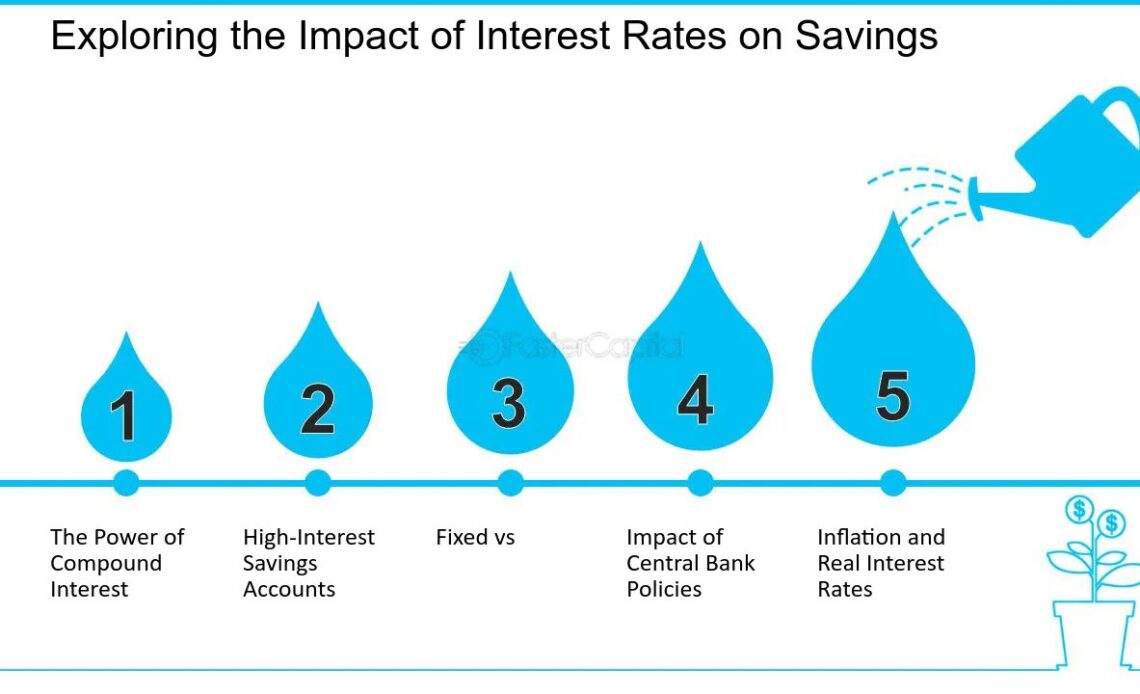
Interest rates are a key factor influencing the financial health of savings accounts. In India, where the interest rates on savings accounts can fluctuate based on economic conditions and central bank policies, understanding how these changes affect your savings is crucial. Here’s a closer look at the impact of interest rate changes on savings accounts and what you need to know to make informed financial decisions.
Understanding Savings Account Interest Rates
Savings account interest rate are the percentages banks pay on the money deposited in your account. These rates can vary widely between different banks and financial institutions. When the Reserve Bank of India (RBI) adjusts its policy rates, such as the repo rate, it influences the interest rates banks offer on savings accounts.
Impact of Rising Interest Rates
1. Increased Earnings on Savings
When interest rates rise, the interest rate on your savings account typically increases as well. This means you earn more on the money you have deposited. For instance, if the interest rate rises from 3% to 4%, the annual interest earned on ₹100,000 would increase from ₹3,000 to ₹4,000. This can significantly boost your savings, especially if you have a substantial amount deposited.
2. Higher Savings Growth
With higher interest rates, the growth of your savings accelerates. Compound interest becomes more impactful as the rate at which your savings grow improves. This can be particularly advantageous if you are saving for long-term goals, such as a child’s education or a retirement fund.
3. Encouragement to Save More
Higher interest rates can make saving more attractive. The prospect of earning more on your deposits might encourage you to save a larger portion of your income. This can contribute to building a more robust financial cushion and achieving savings goals more quickly.
Impact of Falling Interest Rates
1. Decreased Earnings on Savings
Conversely, when interest rates fall, the returns on your savings account decrease. For example, if the interest rate drops from 4% to 3%, the annual interest earned on ₹100,000 would decrease from ₹4,000 to ₹3,000. This reduction in earnings can slow the growth of your savings and impact your financial plans.
2. Reduced Incentive to Save
Lower interest rates can make saving less appealing, as the returns on your deposits are diminished. This may lead some individuals to seek alternative investment options with potentially higher returns, such as fixed deposits or mutual funds. However, it’s essential to consider the risk levels associated with these alternatives.
3. Impact on Financial Planning
With lower interest rates, the amount of interest you earn on your savings can be less than anticipated. This can affect your financial planning, especially if you rely on the interest income for expenses or goals. It might require adjusting your savings strategy or exploring other financial products to compensate for the reduced earnings.
Strategies to Adapt to Interest Rate Changes
- Review and Compare Accounts: Regularly review the interest rates offered by different banks and financial institutions. If interest rates rise, consider switching to accounts with higher rates to maximize your earnings. Conversely, explore other investment options if rates fall significantly.
- Diversify Investments: To mitigate the impact of falling interest rates, consider diversifying your investments. Fixed deposits, mutual funds, and other investment vehicles may offer better returns, though they come with varying levels of risk.
- Regular Savings Contributions: Continue to contribute regularly to your savings account. Even if interest rates are low, consistent contributions can still help build your savings over time.
Conclusion
Interest rate changes have a direct impact on the earnings from savings accounts, influencing how much you gain from your deposits. In India, staying informed about interest rate trends and adapting your savings strategy accordingly can help you make the most of your savings. Whether rates are rising or falling, understanding their effects on your savings account will enable you to manage your finances more effectively and achieve your financial goals.

Crafting words to inspire, engage and motivate. 10+ years of content writing, SEO, digital marketing and blogging experience. Ready to help your brand reach its potential!

